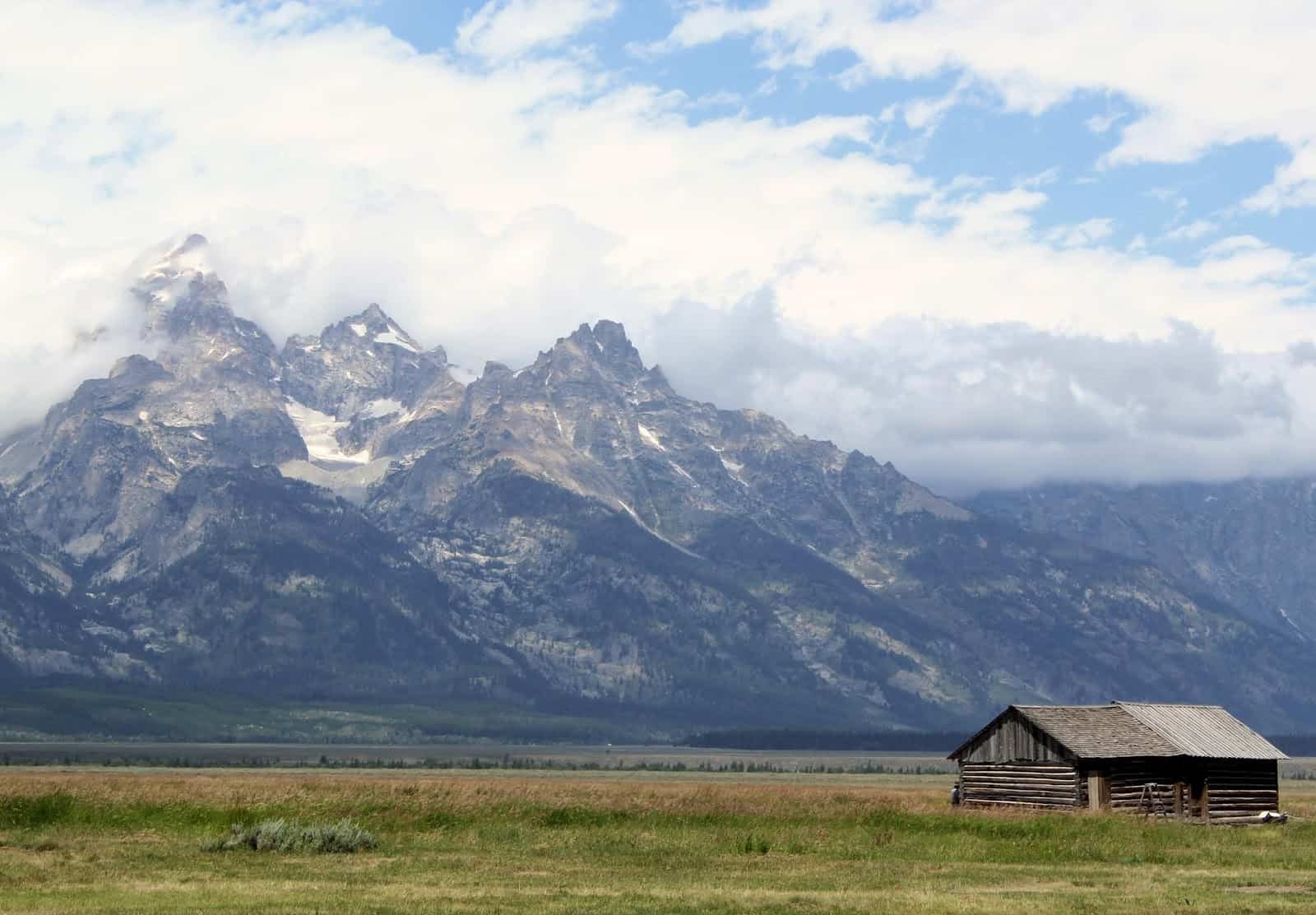Let’s try a contemplation. I want you to imagine one of your favorite outdoor adventures. I’ll give you a second…okay, got it? Now where was it? Who was with you? What beauty most stood out to you? What made that place special, important, and worth remembering? What causes you to remember it so vividly?
Do you care if that place is protected?
Herein lies the best way to protect our federal lands: to fall in love. So let’s think about this as as love story.
Our public spaces are truly a gift, a reminder of incredible creation and the vault of our public history. They shape and form us, but we only know their real value when we have deeply experienced them. Speaking of St. Francis of Assisi in the encyclical Laudato Si’, Pope Francis eloquently writes, “Francis helps us to see that an integral ecology calls for openness to categories which transcend the language of mathematics and biology, and take us to the heart of what it is to be human. Just as happens when we fall in love with someone, whenever he would gaze at the sun, the moon or the smallest of animals, he burst into song, drawing all other creatures into his praise.”
Pope Francis clearly calls for greater love of creation. But how do we protect that creation? Let’s address the three greatest threats to our national parks, as outlined in Part II of this series: direct human impact, indirect human impact, and neglect. Except this time, we’ll work backwards.
****
Neglect
What is the start of every love story? You have to meet each other.
Public lands are my high school sweetheart: I first encountered them as an adolescent hiking through the forests on family vacations. There are many people who meet and fall in love with our public lands at a young age, but this is not the case for everyone. Indeed, there are huge discrepancies in who accesses public lands.
Communities of color enjoy federal public lands at a far lower rate than white people. In 2014, just 22% of national park visitors were people of color, despite composing about 37% of the total population. Over a quarter of Black and Latino visitors saw national parks as unsafe or unwelcoming.
Several organizations have emerged to rectify these discrepancies. Groups like Outdoor Afro and Latino Outdoors have grown to help Black and Latino communities connect with nature. The National Park Service has even created a branch to increase diversity and inclusion. Other programs are seeking to rectify the lack of rangers of color. Hopefully these efforts will further expand the love that diverse communities feel for public spaces, facilitating a sense of ownership, responsibility, and desire to protect them.
A vast number of federal lands celebrate the histories of indigenous nations and communities. Yet tragically, fewer than 2% of park visitors are American Indian, and 61% of American Indian visitors say they don’t know enough about sites to visit. This is land that the US government forcefully stole from indigenous peoples by genocide, deception, and outright lies. It is true that federal lands began protecting the history of indigenous culture starting in 1906, but only after removing the people who lived those cultures. And until recently, American Indian nations were still excluded from federal land management.
In the last few years, there have been greater efforts to include Native Americans in the management of natural resources. A 2016 rule from the Department of Interior opens the door for federally-recognized tribes to voice input on federal lands that are historically, culturally, or geographically significant to tribes. For example, Wind Cave National Park in South Dakota works with twenty different tribes protecting a site connected to several creation stories. Efforts are by no means perfect, with lawsuits pending over natural resource extraction in Arizona or pipelines through Nebraska.
For many communities, the opportunity to fall in love has been denied. People in poverty and people of color visit public lands at far lower rates than wealthy and white people. In order to help others fall in love with these lands, it’s absolutely vital to overcome these obstacles and develop the relationships necessary for love.
Indirect Impact
Where does the love story go from here? Once you meet, a relationship begins. You start talking, maybe going on a few dates. You like the way things are going. What’s the biggest threat to this budding relationship? Dramatic change, like, say, a change in climate…
Climate change presents probably the greatest threat to federal lands, largely due to its myriad of complex and tangled challenges. For example, to fight climate change, we need more and healthier forests, but climate change has directly resulted in an increase in forest fires. How do we break this cycle? After all, the climate, as Pope Francis states in Laudato Si’, “is a common good, belonging to all and meant for all.” Between being a complex challenge and a common good, it can be incredibly difficult to discern what exactly we should do to address the impact of climate change on our federal lands.
Pope Francis further writes, “Humanity is called to recognize the need for changes of lifestyle, production and consumption, in order to combat this warming or at least the human causes which produce or aggravate it.” Put simply, public lands are in danger of becoming part of our throwaway culture. We easily consume and throw away what we do not love. To truly protect federal lands, we must change how we love, appreciate, and enjoy them.
What does this mean practically? We need to combat climate change. But the complex web of connections grows. Should we halt offshore drilling? We should, but it funds the Land and Water Conservation Fund. Should we get rid of coal mining in Wyoming? We should, but it supports other wildlife programs. Should we cut our emissions? We should, but does that mean we stop visiting far away national parks? There is no simple solution here, which can be incredibly frustrating. Like the climate, our public lands are a common good. Protecting them from climate change will take common action, understanding, and sacrifice.
Direct Impact
Over time, our relationship grows and deepens as we spend more and more time together. We fall in love. But we need to continue to care for each other.
How do we directly care for our public lands? We humans leave many traces when we visit public lands. From damaging areas near trails to getting too friendly with the wildlife, we can easily destroy God’s creation. Perhaps the simplest and one of the easiest ways to avoid this is familiarize yourself with Leave No Trace. This program began in 1994 to help people learn best practices for minimizing impact when enjoying nature.
While avoiding degradation is important, we can also take strong steps to improve the areas we visit. Last summer, I spent a week with the Wilderness Volunteers, a group that sponsors trail building and clean-up. During that week, we backpacked, built new bridges, improved erosion control, and took a day off for exploring the backcountry. Groups such as this offer an opportunity to vastly improve visitor experience, protect natural resources, and deepen our own appreciation for these public spaces.
While some of us love playing lumberjack, not everyone enjoys using a draw knife to clear the bark off a 25’-long log. There are opportunities out there for people with a variety of backgrounds and interests. Perhaps you’d rather be a campground host? Give tours and teach about the Guadalupe Mountains? Bike patrol national trails? Support botany efforts in the Grand Canyon? The federal government sponsors each of these volunteer opportunities, as well as thousands more volunteer, internship, and job chances.
In Part II, I noted that one of the worst direct impacts that threatens our public land is encroachment of land development into natural areas. Several programs exist to defend our public lands from this threat, such as the Land and Water Conservation Fund, which works to purchase or protect lands. The Farm Service Agency helps farmers and ranchers combat soil erosion, maintain wetland habitats, and restore forests. These programs face massive budget cuts and environmental protection rollbacks. Where the federal government cannot afford programs, private groups often step in. In 2011, for example, The Conservation Fund helped purchase a 5,000 acre ranch next to Wind Cave National Park and transfer it to the park when funding did become available. Supporting these organizations can further help protect our public lands.
****
When discussing public lands, it’s important to remember what draws us back there. It’s love. My family likes to tease me for my attachment to Wind Cave National Park after working there for a summer. It’s hard not to love a place after learning its intricate stories, favorite spots of solitude, or incredible scenery.
Those who do not have a strong attachment to a place are not likely to protect it. For many, that relationship may never come to be unless we take action. For those already in love, we need to build opportunities to express that love more fully. Our public lands need us, and we need them.
****
Let us know what you love about public lands and why you want to protect them. If you’re looking for ways to get involved, check out the following organizations.
- The Student Conservation Association is an organization that helps connect youth to public lands. They arrange programs ranging from trail building to being a guide to fighting invasive species. For folks 15-22 years old, this is a great place to get started.
- Sierra Club is largely an advocacy organization for the outdoors, but they also organize some amazing trips to get you into the outdoors. They’re a good place for learning to fight climate change.
- The Wilderness Society is another advocacy organization that focuses primarily on wilderness, those places in America that are largely untouched by humans. They work with agencies to plan and hold them accountable.
- Wilderness Volunteers is an organization to help adults get out and work on the trails. They have dozens of trips every year for all skill levels to help them give back and maintain public lands.
- American Rivers fights for the protection of our rivers. While we often focus on just the lands, rivers are a rich and vital part of our history that this organization strives to protect.
I would like to add a personal thanks to the many friends, family, and acquaintances who made this piece possible. They offered many beautiful and important stories that I did not have the space to include, but provided a great deal of hope and direction for this series. Reader John W. beautifully captures the spirit of these pieces, stating that “watching how ecosystems worked was like reading the handwriting of God.”


